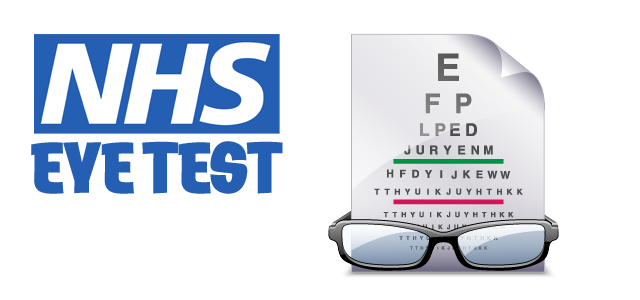![]()
Jack Brown Eyecare, Edinburgh Opticians.
Email: info@jbeyecare.com
Jack Brown Eyecare Branches
30 Elder Street, Edinburgh EH1 3DX
Tel: 0131 557 3531
Open in Google Maps
Westside Plaza, Edinburgh EH14 2SW
Tel: 0131 442 2333
Open in Google Maps

Creutzfeld-Jakob Disease (CJD) is a frightening but nonetheless intriguing disease. It occurs in most populations at approximately 1 case per million per year. It is referred to as classical or sporadic CJD to disitnguish it from new variant CJD (nvCJD) of which there have been to date a total of 25 cases and which is thought to be the human equivalent of bovine spongiform encephalopathy (BSE). Classical CJD is not contagious but has been transmitted by transplantation of cornea 1 (world total of 3 cases), dura mater, pituitary growth hormone and by comtaminated neurosurgical instruments and cortical electrodes. Although there is rapidly progressive dementia invariably leading to death usually within months of onset, it is a diagnosis that is only confirmed postmortem by characteristic spongiform change or immunochemical identification of the pathological isoform of the prion protein in the brain. Although it has long been an absolute contraindication to corneal donation its exclusion can only be achieved by a low threshold of suspicion as there is as yet no serological screening test.
Adverse Incident
In November 1997 it was revealed that a donor in Scotland who had died from histologically proven carcinoma of the lung also had CJD, a fact which only came to light some months later as a result of a routine neuro pathological post mortem evaluation, although there had been some neurological symptoms shortly before death. By this time her eyes had been processed by the Corneal Transplant Service (CTS) Eye Bank in Manchester, the tissue having passed the normal tests for HIV, Hepatitis C, Hepatitis B, and bacterial and fungal contamination. Having healthy endothelia the corneas were transplanted into two recipients and both scleras into a third individual in a total of three different centres.
When the information bacame available to CTS the first action taken was to inform all three transplanting surgeons once the destination of the tissue had been thoroughly checked. This was only achieved just as the story reached the national and international press. It proved to be a difficult time not only for the patients but also eye bank staff, surgeons and UKTSSA who were actively involved. There are no Department of Health guidelines for action under such circumstances and consequently there is uncertainty as to where responsibility lies. Not surprisingly, the press, somewhat confused over the difference between classical CJD and nvCJD against a background of major public concern about BSE, were keen to establish if and where blame could be apportioned. The incident prompted a useful editorial 3 which put the risk of such an event occurring into context. The implications of the incident are far reaching and a number of changes have already been made.
Action So Far
- After receiving expert advice from the Spongiform Encephalopathy Advisory Group in December 1997, all surgeons offered the three patients explantation of ocular tissue. Two patients accepted the advice and had further surgery by January 1998. All three remain well.
- The Duty Office at UKTSSA now routinely asks if a postmortem on a donor is pending. No tissue is issued form the CTS Banks in Bristol and Manchester until such time as the result is known (December 1997).
- The CTS Eye Bank policy on sclera has been changed to ensure that sclera cannot be held in stock and that sclera from any single eye is not transplanted into more than one individual and can always be traced to a named recipient (i.e. a policy which is in line with corneal transplantation).
- Sir William Stewart chaired an expert group who undertook and subsequently published on behalf of the governemnt (April 1998) an independent review of the incident which contains 18 recommendations. Copies can be obtained from Margaret Hallendorff at the College.
- Guidelines for retrieval of donor eyes have now been accepted by the College and are available, including on this website. All ophthalmic units are expected to have read this document.
- A re-designed ocular tissue donor information form and contrainidication list are now issued with UKTSSA retrieval boxes (July 1998).
College Response
The recommendations of the Stewart report are under active consideration principally by the Ocular Tissues Standards and Audit Group (OTSAG). This Group was established in 1996 and seeks to define essential and best practice in the fields of ocular and non-ocular tissue transplantation. The following proposals are currently under consideration:
- The Royal College of Ophthalmologists should develop a portfolio of documents defining standards in the transplantation of the cornea, sclera and all other ocular and non-ocular tissues into the human eye.
- The portfolio should be compiled and updated by OTSAG which is accountable to the Royal College of Ophthalmologists and to the Corneal Advisory Group at UKTSSA.
- All units regularly undertaking ocular tissue transplantation should contribute to the supply of ocular tissue for transplantation and research nationwide.
For the first time during 1997-98 procurement rates appear to be falling. Units should aim to procure preferably twice as many eyes as those of which they use any part. To do so would compensate for the significant discard rate that occurs during eye banking which ensures that only corneas with high endothelial cell counts are issued for transplantation. (The Department of Health recognises the time and commitment given to eye retrieval and a scheme has operated for some years to reimburse those units who contribute a significant net supply of donor tissue).
- Retrieval should be undertaken according to guidelines, by trained medical or non-medical staff.
- All consultant ophthalmic surgeons who undertake ocular tissue transplantation should have knowledge of the procedure of eye procurement and banking, understand the unique risks involved and accept that they have ultimate responsibility for their patients who should be well informed.
- All Medical Directors of Eye Banks should ensure that all ocular tissue is traceable to its destination. This includes tissue that is used in research or is discarded as unsuitable or surplus to requirement in addition to that used in recipient patients.
- All consultant ophthalmologists and their junior staff who undertake transplantation of any kind should actively take part in routine long term follow-up of clinical outcome. Revised forms for transplant, six month and annual follow-up thereafter are currently being evaluated.
text size >












